Hydroponics might be a new concept to most people. It offers a great transition from traditional gardening and using soil as a growing medium, to using water with a nutrient-rich solution.
Setting up a hydroponic system is not particularly that easy but it has so many advantages that might allow you to think twice.
An advantage to using hydroponic systems is that it utilizes fewer gallons of water and fertilizer compared to crops planted in an open area like a field.
Hydroponic systems also produce an excellent yield at a faster pace because their roots are well-targeted and fed. These systems can grow most types of plants.
Over the years, countless techniques have emerged from this system and have adapted to growing various fruits and common vegetables.
Let’s tackle the best-growing crops in a hydroponic setup and figure out how long they take to grow, their ideal temperature and pH levels, as well as the best hydroponic technique to use on them.
- Related Article: What Is the Best Plant to Grow Hydroponically
1. Lettuce
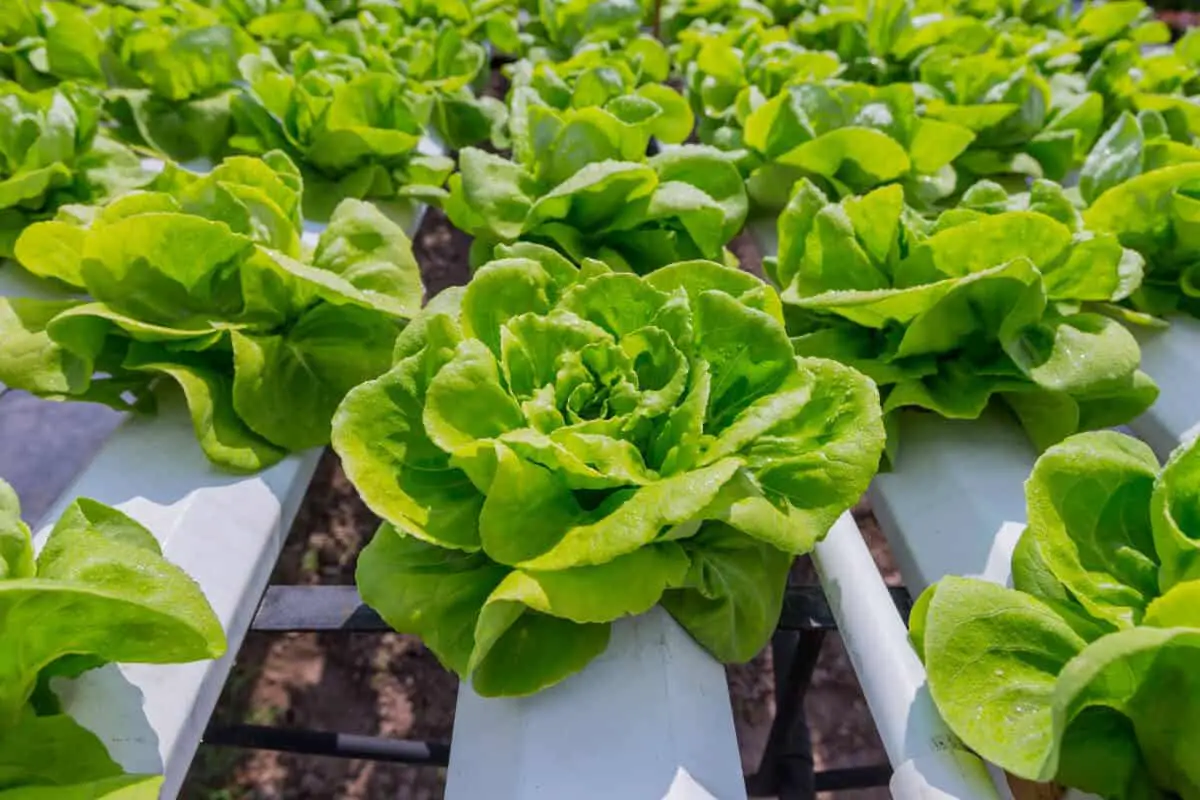
Beginners would love this vegetable. Apart from being easy to cultivate, it also requires less equipment and grows pretty fast.
How Long Does Lettuce Take to Grow?
At an impressive pace of 2 – 4 weeks, you can easily harvest your lettuce from seed. Again, this might have exceptions for other variants.
In comparison, soil-grown lettuce generally takes from 6 – 8 weeks to harvest.
Temperature and pH Levels
Lettuce prefers to be grown in cool temperatures. Planting it in warmer climates will let it flower quicker, but result in bitter produce.
This crop is best cultivated in environments that have a 60℉ – 70℉ climate. For water, the ideal pH level should be around 6.0 pH.
Best Hydroponic System for Growing Lettuce
In growing lettuce, a Water Culture System like NFT and Ebb and Flow System is best due to their design.
WCS allows your plants to float in nutrient-rich water and because their roots will eventually grow downwards, they will be able to absorb much of the oxygen and important nutrients to aid them in their development.
2. Chives
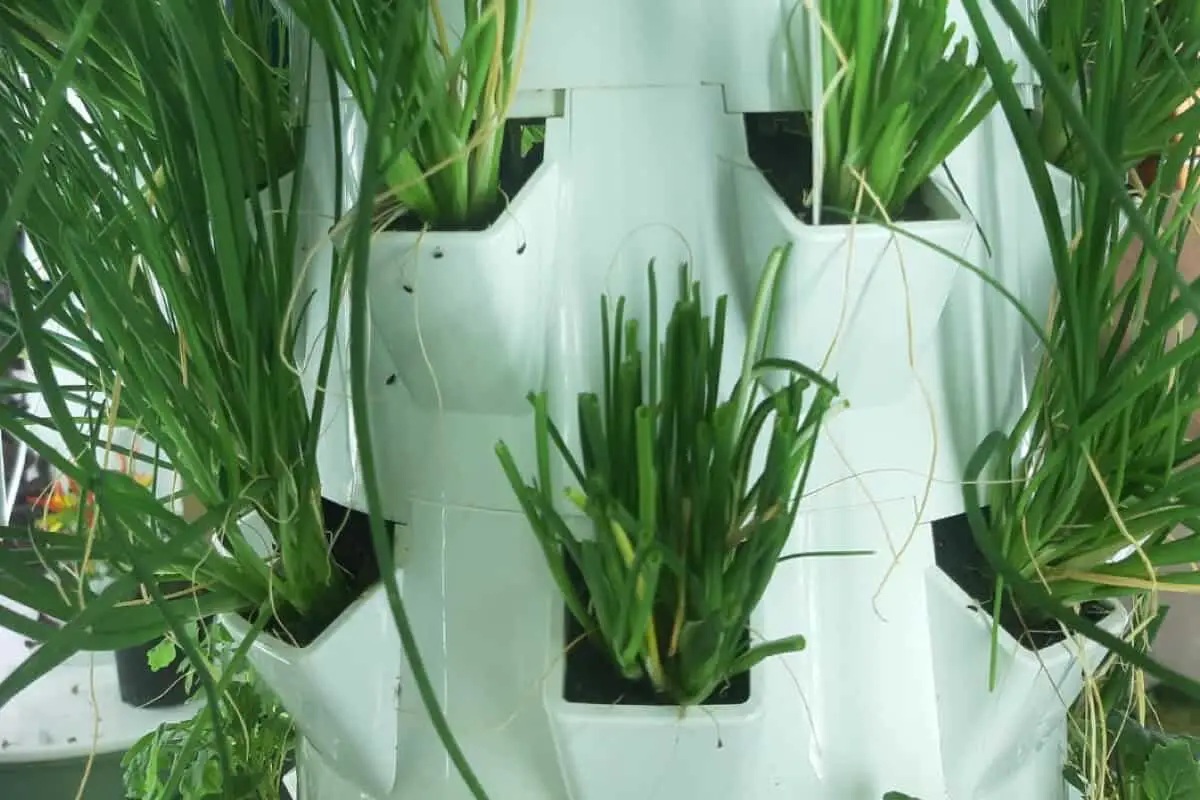
Hydroponic systems prefer compact plants and chives are the perfect fit for that description. This makes them one of the most popular herbs to be grown using this system.
How Long Does Chive Take to Grow?
If you are not so patient, you will be glad to know that from seeds, chives can already be harvested in 4 – 6 weeks. Although it’s advised to let your first harvest of chives grow for about 8 weeks, before harvesting them.
A later harvest will give your plants time to develop a stronger root system, so their regrowth will be faster.
Temperature and pH Levels
Chives grow particularly well in sunlight and need up to 14 hours of light per day. A moderate to warm temperature between 65℉ – 80℉, is considered the optimum temperature for these plants.
The ideal pH levels in your hydroponic system should be slightly acidic. Chives are best grown with a water pH level between 6.2 – 6.8 pH.
Best Hydroponic System for Growing Chives
Chives can be grown using a variety of hydroponic systems. Popular hydroponic systems that are commonly used to grow Chives are the Ebb and Flow system, Vertical Towers, Drip systems, and the Floating Raft system.
3. Beans
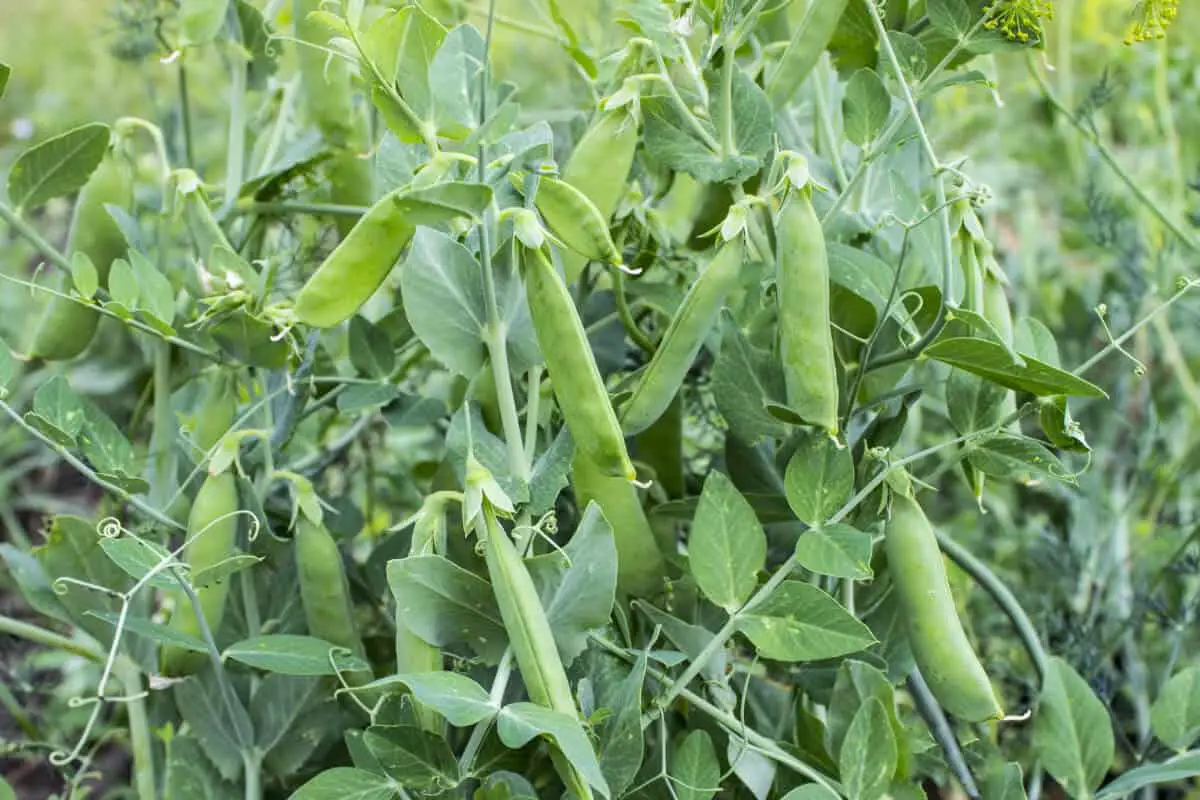
Whether it’s Green beans, Pole beans, or any other type of bean, you can practically grow any variety of bean with a hydroponic system.
How Long Do Beans Take to Grow?
The advantage of growing beans is that they are rapid growers. Once they have germinated and started to creep up their support structure, you can expect pods to form shortly after. Beans are generally harvested within 6 – 8 weeks from seed, a 60-day estimate.
Temperature and pH Levels
Beans love sunny areas and grow best with 12 – 13 hours of light per day. For developing beans, the ideal temperature is from 70℉ – 60℉. Anything below that will result in poor growth.
While for water, they thrive best in an optimum pH level of 6.0 – 6.5 pH. These values may vary slightly depending on the variety grown.
Best Hydroponic System for Growing Beans
The preferred hydroponic method for growing beans is the Ebb and Flow system. Bean stalks are creepers and will need some support. Using clay pellets or gravel as a growing medium will keep the bean plant stable and prevent it from becoming top-heavy.
4. Peppers
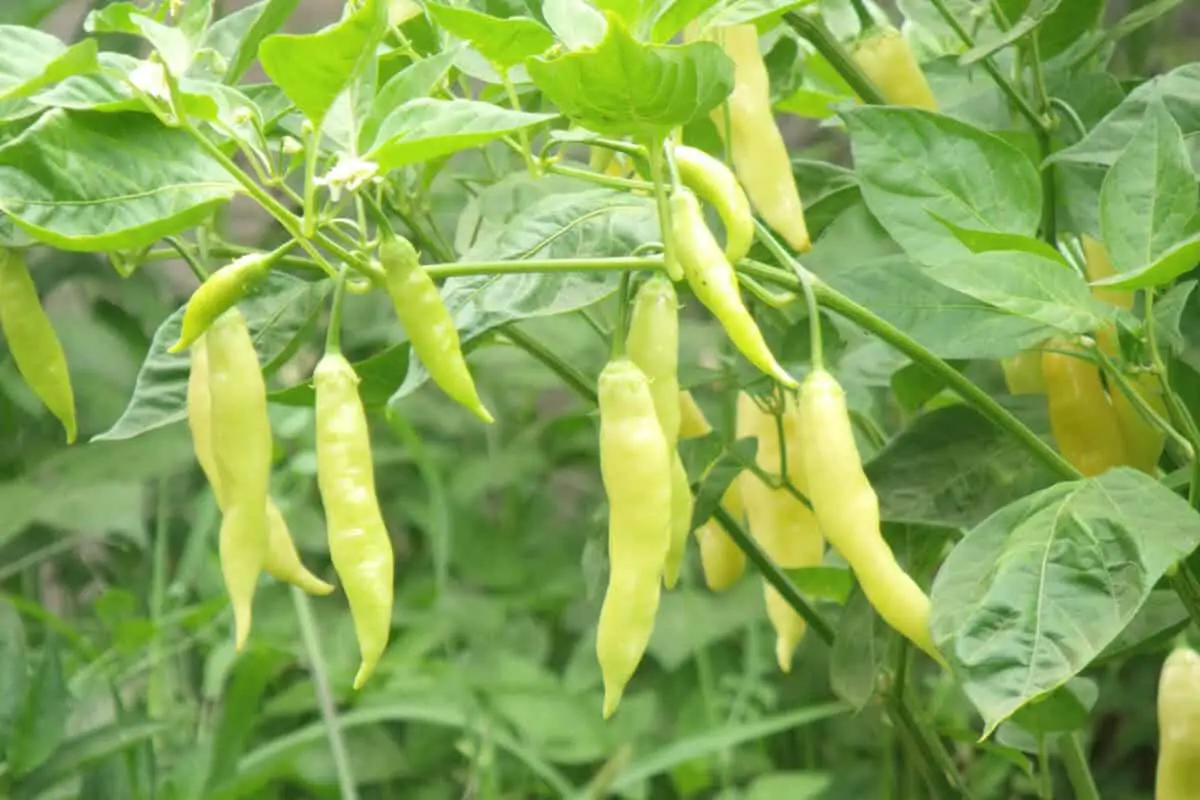
A wide variety of 150 kinds of peppers are available worldwide, each with a unique flavor and vibrant colors. These are also best grown in hydroponic systems.
How Long Do Peppers Take to Grow?
Because peppers compensate for a bigger size when fully grown, they also mature at a slower pace than other hydroponic crops. Hydroponically grown peppers can be harvested for 60 – 80 days on average.
Temperature and pH Levels
A moderate climate of 65℉ – 75℉ is suitable for most pepper plants. Make sure to observe this temperate closely if you want your pepper plants to grow to produce. Too hot, and it will not bear fruit.
They require between 14 – 18 hours of grow light or 10 – 12 hours of sunlight and an ideal pH level of water that is between 6.0 – 7.0 pH.
Best Hydroponic System for Growing Peppers
Three main hydroponic systems are used to grow peppers, the Ebb and Flow, The Wicking System, and the Deep Water Culture System (DWC). The cheapest and easiest method to grow peppers is the Deep Water Culture system.
5. Mint
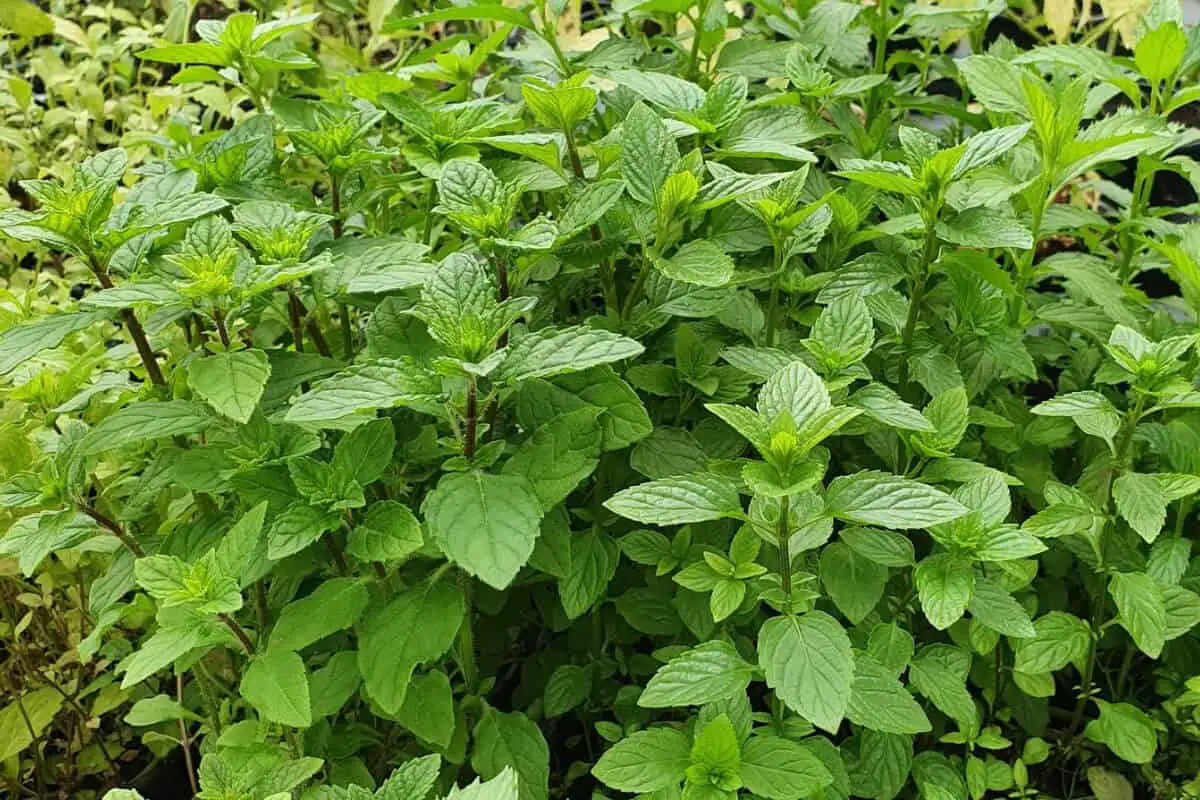
How Long Does Mint Take to Grow?
Compounds in mints give it an enticing aroma that is most certainly enticing to the palate. This is why fresh mints are preferred by so many chefs.
Fresh mint is an herb that can be easily grown and harvested within just 14 – 21 days. On top of that, mint can grow over 4 inches per month, and its plants will provide multiple harvests per year.
Temperature and pH Levels
Mint grows best in cooler to moderate temperatures, between 55℉ – 70℉. This herb thrives well with at least 12 – 16 hours of exposure to the sun per day.
Its ideal pH water level in a hydroponic system is between 6.0 – 7.0 pH.
Best Hydroponic System for Growing Mint
When mint grows in any hydroponic system, its leaves sprout from its root so keep that in mind. The Nutrient Film Technique and Ebb and Flow systems are the most preferred hydroponic systems for growing mint.
Both of these systems, provide sufficient space for the mint plants to stretch their roots and take over your hydroponic system.
6. Kale
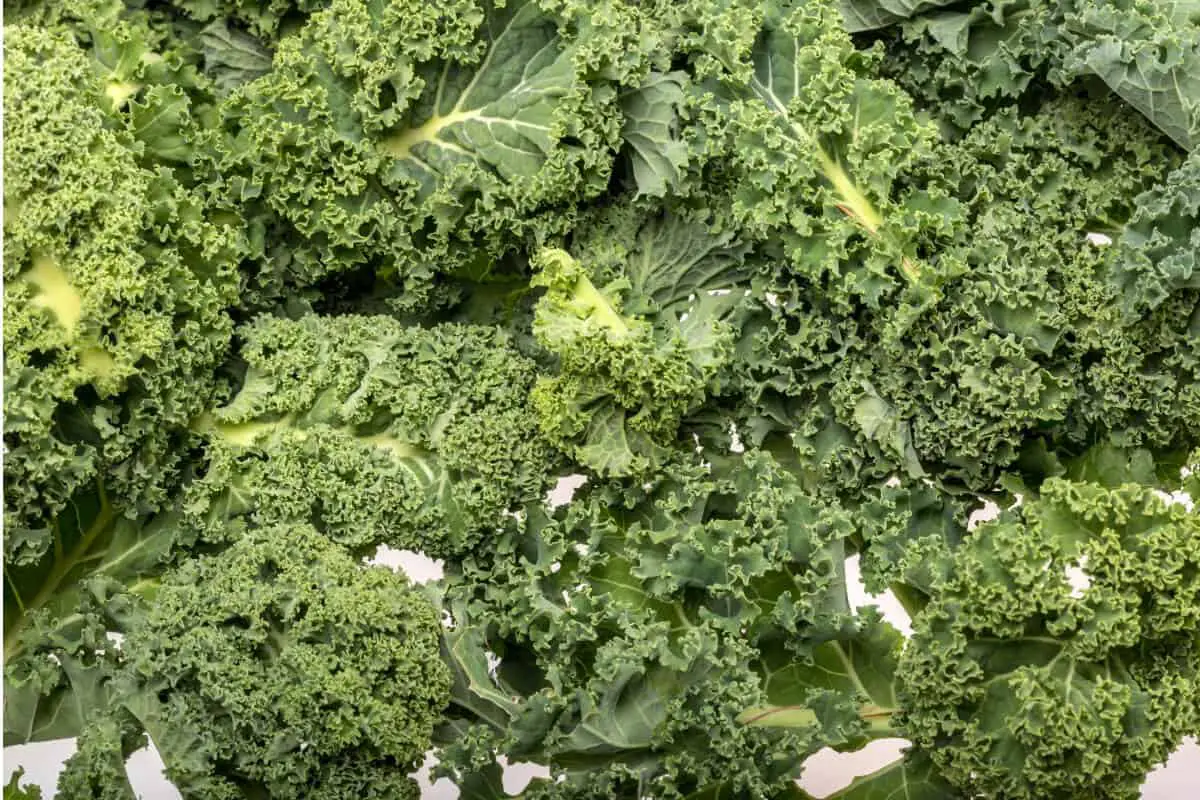
Similar to leafy green lettuce, kale grows well in a hydroponic vegetable garden. Kale is considered one of the best-suited vegetables for a hydroponic system. It’s grown widely around the world for the richness of its flavor.
How Long Does Kale Take to Grow?
Like most leafy greens, they are rapid growers. Baby kale can be ready to harvest between 20 – 30 days. Larger and more mature kale plants, take between 3 – 4 months before they are ready to harvest
Temperature and pH Levels
Kale grows best at moderate to higher air temperatures, between 75.2℉ – 82.4℉. The water temperature of your hydroponic system should be relatively cooler, particularly between 65.3℉ – 70.7℉.
The recommended pH levels for your plants are ideally between 5.8 – 6.3 pH, kale seems to prefer water that is slightly more acidic.
Best Hydroponic System for Growing Kale
There are two preferred hydroponic systems used for cultivating kale. The Deep Water Culture (DWC) and the Nutrient Film Technique (NFT) are the preferred hydroponic systems for growing kale.
The DWC system is beneficial to growing kale, because of the large volume of water that this method uses. The temperature of your water, pH levels, and the composition of nutrients in your water are not susceptible to imbalances that easily.
7. Spinach
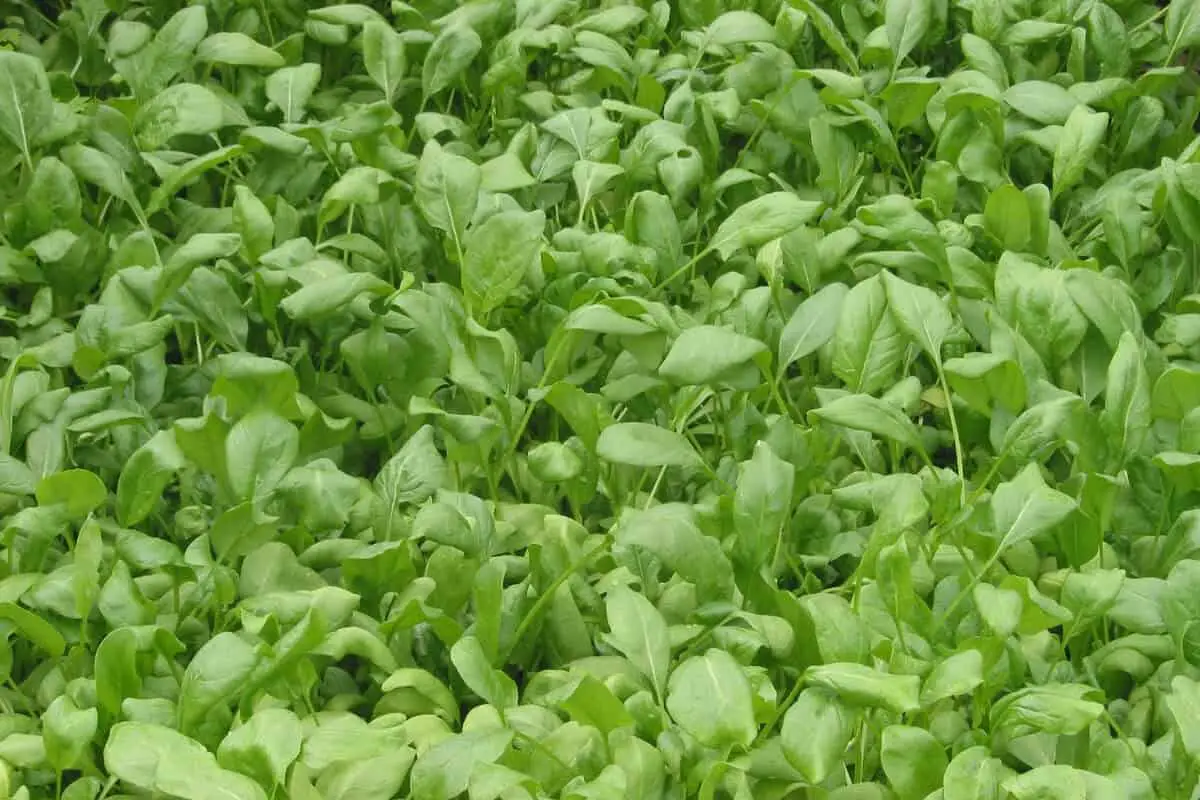
Pop eye’s notorious strength came from eating lush green spinach. Growing this vegetable in a hydroponic garden is easy but it may also come with some challenges.
How Long Does Spinach Take to Grow?
Spinach is a slower-growing leafy green vegetable. From seed, it may take 14 – 21 days for this crop to sprout. After that, you need to wait for 40 – 60 more days to harvest it depending on the size that you want it to come.
Temperature and pH Levels
Most leafy green vegetables prefer cooler climates and spinach is no different from the rest. It grows best in cooler temperatures between 65℉ – 79℉. Spinach needs 12 – 14 hours of light per day.
Avoid exposing your hydroponic spinach to excessive heat as this can result in unwanted bolts in plants and a bitter taste when harvested.
The ideal pH level for spinach water in a hydroponic system is between 5.5 – 6.5 pH.
Best Hydroponic System for Growing Spinach
The best hydroponic systems for growing spinach are the Floating Raft technique, the Ebb and Flow technique, and the Nutrient Film Technique (NFT). The Floating Raft technique is a complicated technique that beginner growers will struggle to master.
The Ebb and Flow technique, otherwise known as the flood and drain technique, periodically floods the roots of your plants, giving them the nutrients they need. The nutrient solution is then drained from the roots until the process is repeated.
8. Tomatoes
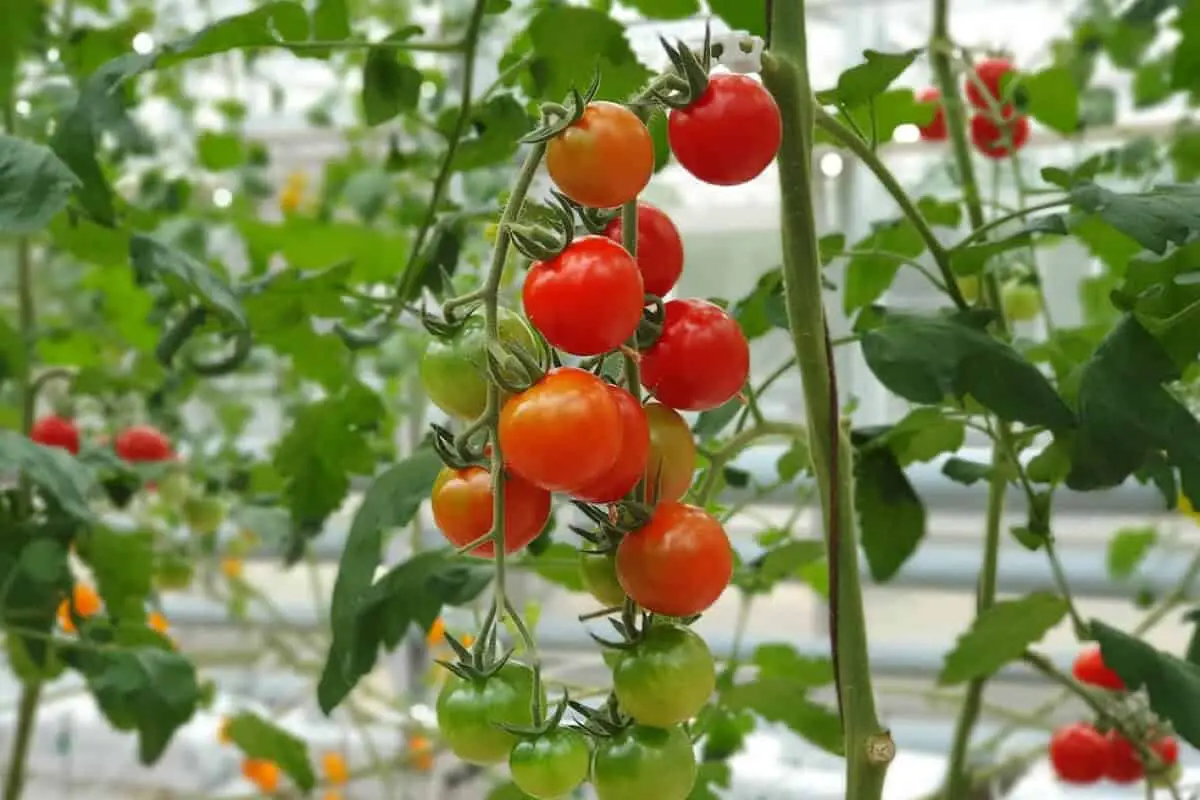
Tomatoes are one of the favorites of people who operate hydroponic systems. They thrive in a hydroponic setup as they simply produce bigger and taster tomatoes in this medium compared to when they are grown in soil.
How Long Do Tomatoes Take to Grow?
Tomatoes usually start sprouting within 5 – 10 days. It will then grow and start to flower in 4 – 6 weeks. Harvest will be available 2 – 3 months from seed.
Temperature and pH Levels
Tomatoes are a friend of temperate to warm climates between 60℉ – 80℉.
Expose them to a temperature that is too cold and they will grow slowly. Expose them to a temperature that is too hot and they will cease flowering.
The optimum pH level for tomato plants falls between 5.5 and 6.5. Don’t let the pH levels in your water go above or below these levels. Your plants will struggle to absorb nutrients should your pH levels be incorrect.
Best Hydroponic System for Growing Tomatoes
Tomato plants are susceptible to becoming top-heavy and need support from trellises. The hydroponic system that is preferred by hydroponic tomato cultivators is the Nutrient Film Technique.
A benefit of using the Nutrient Film Technique is that tomato plants are afforded a large area to grow. The roots of your tomato plants will be submerged in nutrient-rich water and can absorb nutrients as they need them.
9. Basil
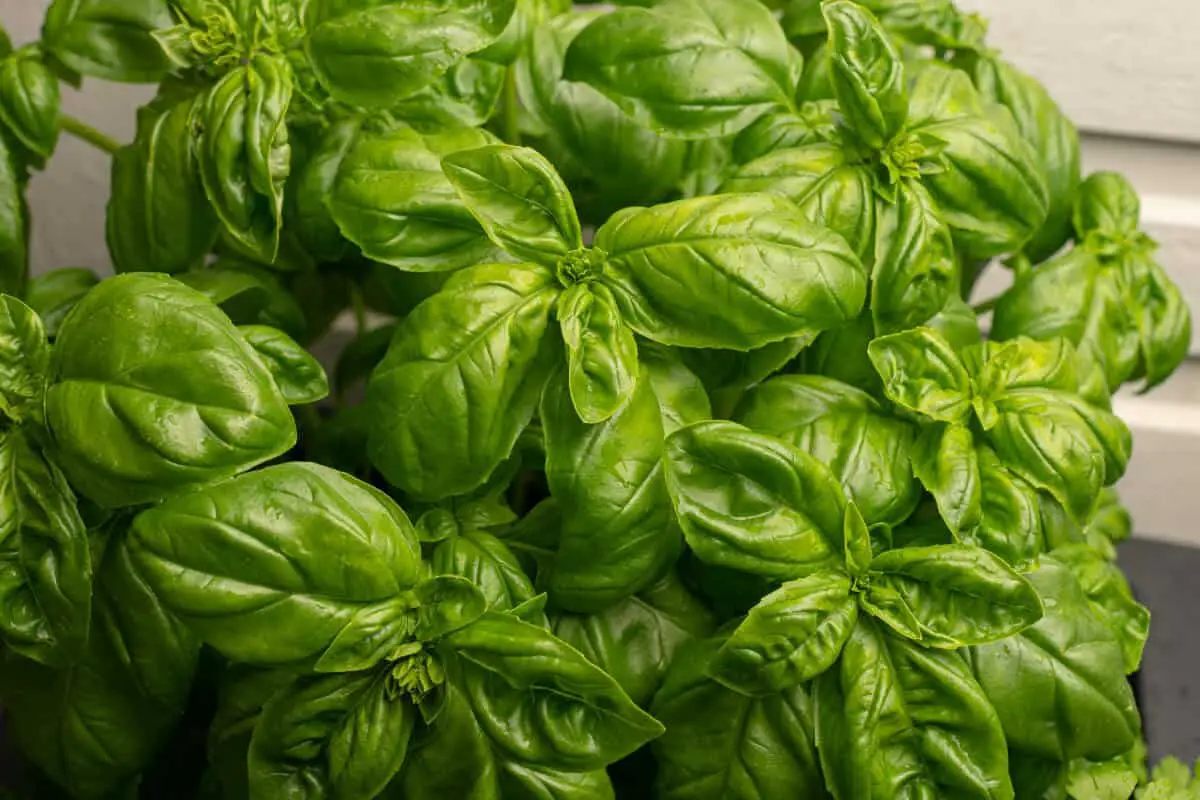
Basil plants offer more than just the taste of their succulent green leaves. The plant produces a powerful aroma that will liven up your growing room. Growing basil in hydroponics is simple, and even beginner hydroponic enthusiasts will enjoy cultivating this plant.
How Long Does Basil Take to Grow?
Basil is a fast-growing leafy green plant. The leaves from a basil plant can be harvested within 28 days from seed. It’s advised to wait for 6 weeks before harvesting leaves from the basil plants.
Temperature and pH Levels
Basil is quite hard to please.
Basil thrives in an environment whose temperatures run from 65°F – 70°F. This herb is also thirsty for sunlight and needs a minimum of 14 hours of growth light per day.
For optimum nutrient absorption, basil’s pH water levels should fall at 5.8 – 6.2 pH.
Best Hydroponic System for Growing Basil
The two preferred hydroponic systems for growing basil are the Deep Water Culture (DWC) and Nutrient Film Technique (NFT).
The DWC and NFT both allow your plant’s roots to suspend in water and absorb nutrients throughout the day. These techniques provide sufficient oxygen for your plants’ roots.
10. Radishes
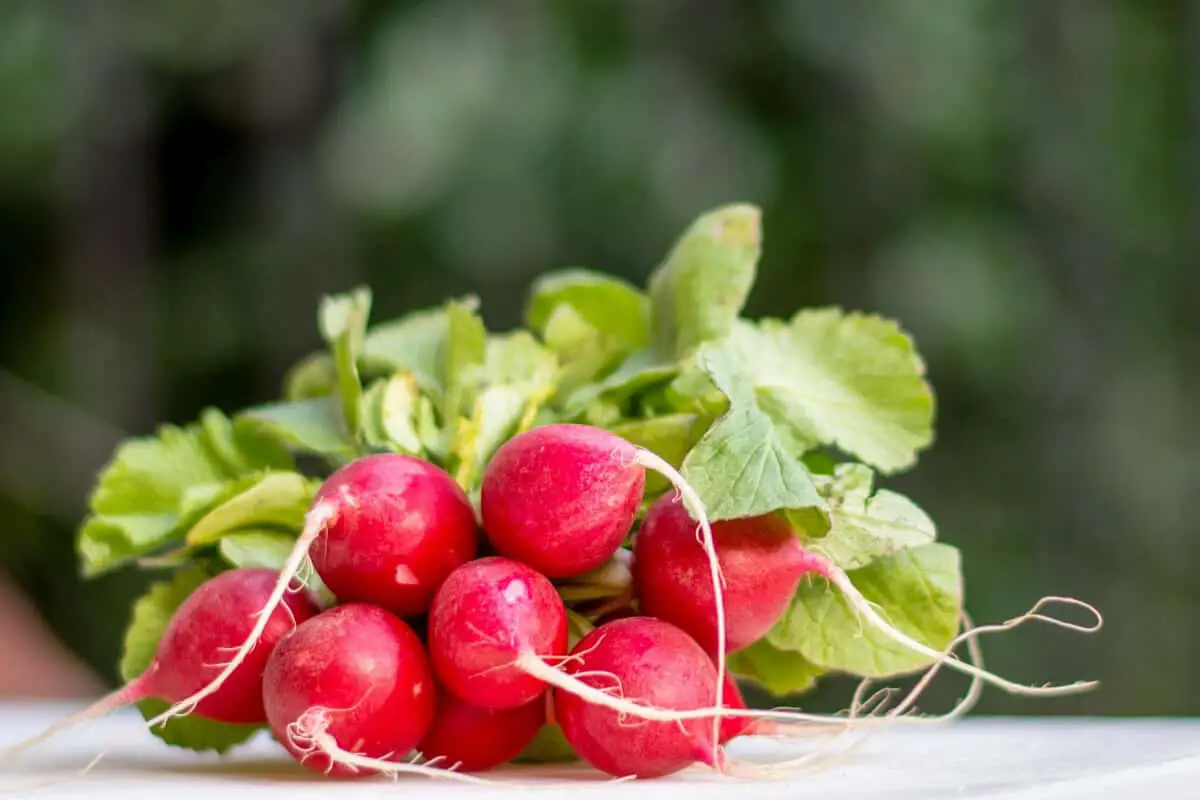
You may be surprised to see radishes on our list but they are in fact, one of the most common crops grown in hydroponic systems. They are also very fast growers.
How Long Do Radishes Take to Grow?
Planting radishes at different intervals will ensure that you have a monthly supply of radishes, throughout the year. Radishes can be harvested every 3 – 4 weeks.
Temperature and pH Levels
In a hydroponic system, keep your radishes happy at 60℉ – 76℉.
Also, monitor the pH levels of this crop in the 6.0 – 7.0 pH range, so your radishes can absorb the nutrients in your water well.
Best Hydroponic System for Growing Radishes
Two recommended hydroponic systems are commonly used for growing radishes. The Deep Water Culture system and the Ebb and Flow system are frequently used by hydroponic radish cultivators.
The Ebb and Flow system is beneficial for a hydroponic grower because of its affordability and simplicity. Radishes generally grow fast and can be removed from the Ebb and Flow system as soon as they are ready and it will not affect other plants.
11. Spring Onion
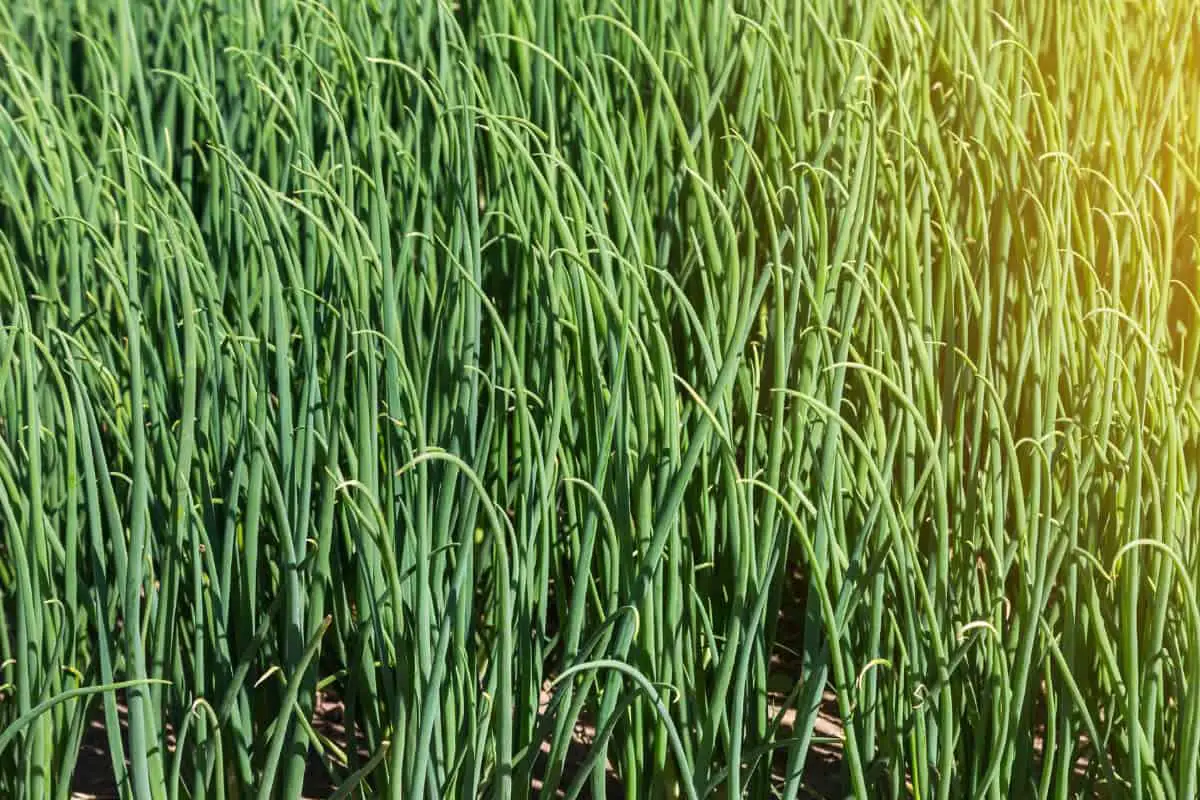
Spring onions are widely used for cooking and it a perfect crop to grow in hydroponic gardens as they have a shallow root system, an ideal condition for this setup.
How Long Does Spring Onion Take to Grow?
In a hydroponic system, it can take a spring onion between 80 – 95 days to harvest.
Temperature and pH Levels
Spring onions don’t require excessive heat or extremely cold conditions to grow so keep your growing environment somewhere between 68℉ – 78℉.
The recommended pH levels for spring onions are between 6.0 – 6.5 pH. There is some leniency for errors, should the pH level get slightly over or under.
Best Hydroponic System for Growing Spring Onions
When it comes to picking the best hydroponic technique to grow this crop, it all boils down to these three: the Ebb and Flow, The Deep Water Culture, and the Floating Raft method.
Final Thoughts on the Best Hydroponic Vegetables
A revolutionized way to grow crops and vegetables these days is through a hydroponic system.
Giving life to a wide range of common vegetables, fruits, and herbs, this controlled environment can produce without soil.
This article has highlighted the best hydroponic vegetables that even beginners can start to grow. You can also try planting cucumber, a common vining plant.
Start your hydroponic farming journey early and find the joy in growing natural produce by yourself!
If growing hydroponic plants is something that you are curious about, do check out these amazing articles:

